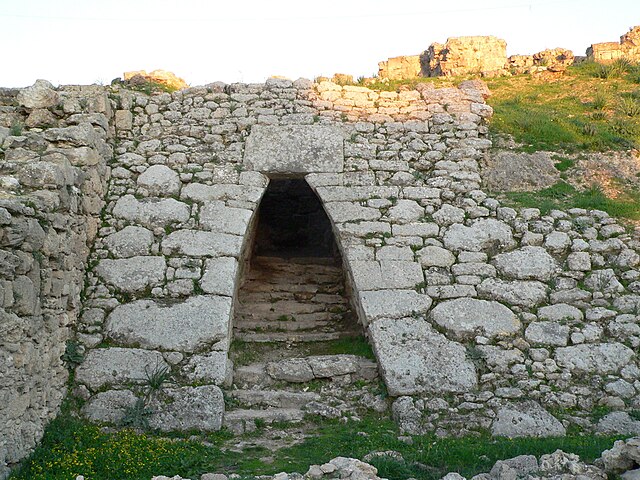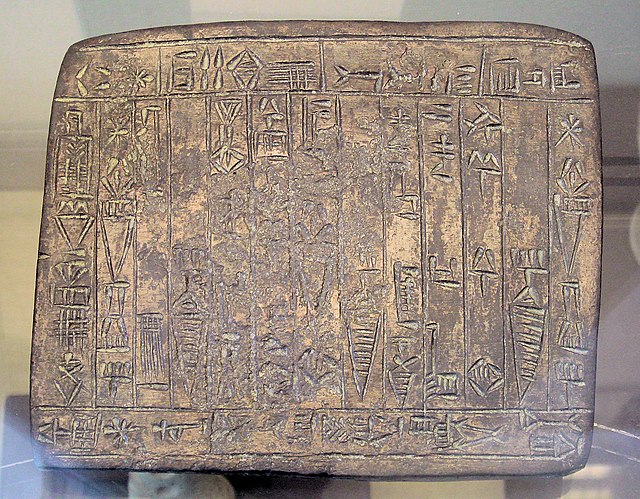The Hurrian songs are a collection of music inscribed in cuneiform on clay tablets excavated from the ancient Amorite-Canaanite city of Ugarit, a headland in northern Syria, which date to approximately 1400 BC. One of these tablets, which is nearly complete, contains the Hurrian Hymn to Nikkal, making it the oldest surviving substantially complete work of notated music in the world. While the composers' names of some of the fragmentary pieces are known, h.6 is an anonymous work.
An entrance to the royal palace at Ugarit, where the Hurrian songs were found
The Hurrians were a people who inhabited the Ancient Near East during the Bronze Age. They spoke the Hurrian language, and lived throughout northern Syria, upper Mesopotamia and southeastern Anatolia.
Foundation tablet. Dedication to God Nergal by Hurrian king Atalshen, king of Urkish and Nawar, Habur Bassin, circa 2000 BC. Louvre Museum AO 5678. "Of Nergal the lord of Hawalum, Atal-shen, the caring shepherd, the king of Urkesh and Nawar, the son of Sadar-mat the king, is the builder of the temple of Nergal, the one who overcomes opposition. Let Shamash and Ishtar destroy the seeds of whoever removes this tablet. Shaum-shen is the craftsman."
Incense burner. Hurrian period, 1300–1000 BC. From Tell Basmosian (also Tell Bazmusian), modern-day Lake Dukan, Iraq. Currently displayed in Erbil Civilization Museum.
Hurrian incense container
The Hittite gods Teshub and Hebat, chamber A, Yazilikaya, Hittite rock sanctuary, Turkey





